The Dell XPS 13 (9300) Review: Return of the King
by Brett Howse on July 16, 2020 10:00 AM ESTWireless
Dell offers two wireless radio options for the XPS 13, and both are Killer-branded. The default wireless card is the Killer Wi-Fi 6 AX1650, which is a 2x2:2 wireless solution based on the excellent Intel AX200. If somehow you missed it, Intel recently acquired Rivet Networks, so the Killer brand should continue to provide the performance and stability of the Intel adapters for the foreseeable future. Dell also lists a second Killer AX500 Wi-Fi 6 option, but this Killer product is based on the Qualcomm 6390 Wi-Fi 6 chipset. Since Killer has been acquired, that part may not be around for much longer. Our review unit features the Intel-based AX1650.
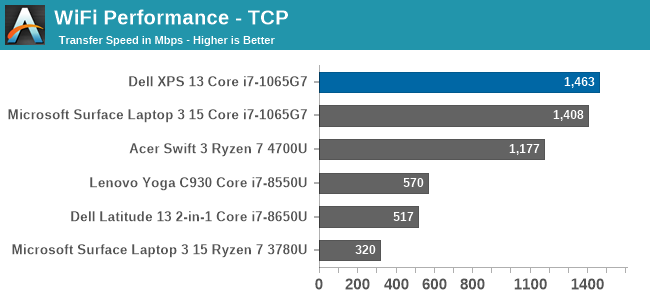
Performance is simply fantastic, and ever since Killer was able to base their network cards on Intel wireless, the stability concerns appear to be a forgotten memory. There was not a single time that the laptop had any issues with its network connection during any of the testing. That was certainly not the case on some of the older Qualcomm-based Killer products.
Audio
Dell offers Waves MaxxAudio Pro stereo speakers, at 2.5 Watts peak each, which are outfitted on the bottom of the laptops right on the edge of the device.
Sound quality is a bit on the tinny side, with not a lot of low end at all. The speaker setup does get quite loud though, with 83 dB(A) measured one inch over the trackpad at maximum volume. There was little to no distortion at peak volume either.
The dual-microphone array is found on the very top of the bezel, which would allow it to work with the device closed. It is a great way to hide the holes, with only the 2.25 mm 720p webcam showing in the bezel itself.
Thermals
Dell outfits the XPS 13 with dual fans and a single heatpipe to cool the 15-Watt Thermal Design Power of the Core processor under the hood. They have added hidden exhaust vents in the hinge, to allow more airflow without compromising the looks. There is also a layer of GORE thermal insulation under the keyboard, which helps keep that portion cool to the touch even under load.
To see how the XPS 13 performs under load, it was run at 100% for an extended period while monitoring the device.
This graph tells an interesting story, unlike most laptops we see. First, Dell has gone absolutely crazy with the PL2 level on the XPS 13, with a peak measurement of a whopping 42 Watts. But, that is not sustainable in a 13-inch laptop, and the CPU throttles in PL2 until it reaches the PL1 limit, which is right at 15 Watts in the XPS 13’s most performant mode. Most of the notebooks we have tested tend to allow a PL1 level above this, with maybe 20-21 Watts as a constant, but Dell clamps to 15 Watts, then spikes back up when the thermals allow, so we see this see-saw effect of the device running between 15 and 30 Watts. This is similar to how the XPS 13 2-in-1 behaved, and it would be nice to see the company address this with a more consistent power delivery under sustained load.
Over the duration of the test, the device averaged 18 Watts of draw, with an average CPU temperature of 80°C, with the four cores running at 2100 MHz. During this extended run, the noise level was very restrained, only hitting around 44 dB(A) measured about one inch over the trackpad. The GORE thermal insulation also did its job, with the keyboard deck remaining cool.
Software
Dell’s included software suite is a very polished set of applications, allowing the user to quickly get the device set up, adjusted, and of course, contact support. As with most manufacturers, they include a utility to get the latest updates, called Dell Update, and that includes some maintenance utilities as well.
Dell’s Power Manager software allows you to change the power profile, as well as adjust the battery charging. The Thermal Management tab allows you to pick a fan and CPU profile, or leave it as the default Optimzed setting which works well for most scenarios.
Dell offers a plethora of battery options to maintain and extend the life of the battery. Out of the box, it comes in an “Adaptive” setting which learns your usage patterns and tries to keep the battery at a good state of charge, but you can override that to keep the battery always at 100% charge in case you need it, or if you mostly use it on AC you can set it to keep the battery to a lower level of charge to prolong its life.
The days of laptops being saddles with an almost unending array of shareware and trial software seem to be mostly over, and even though Dell included Norton with the XPS 13, it can easily be removed if necessary.


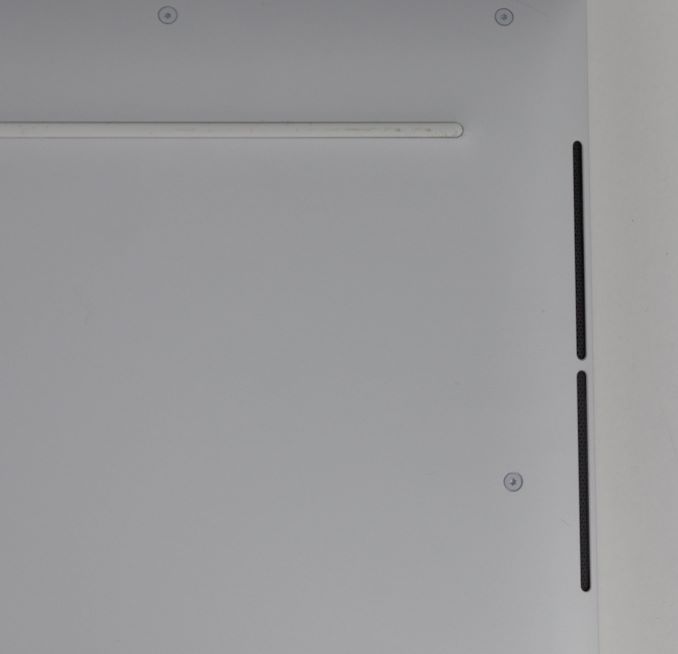
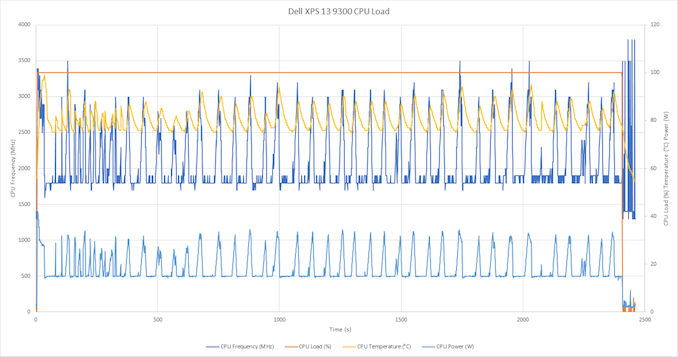
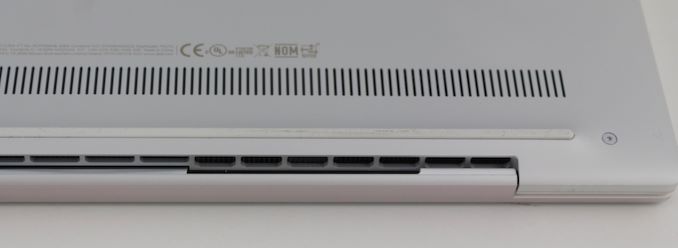

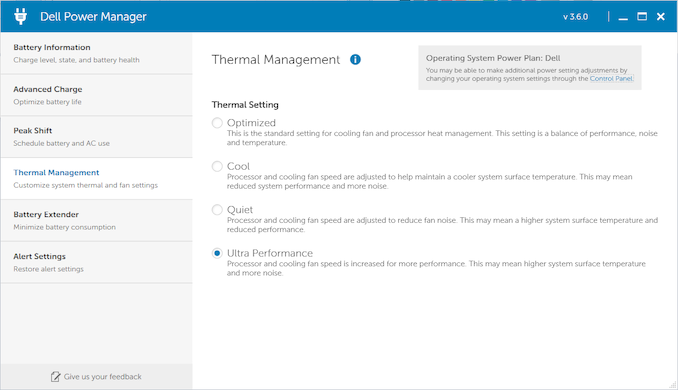
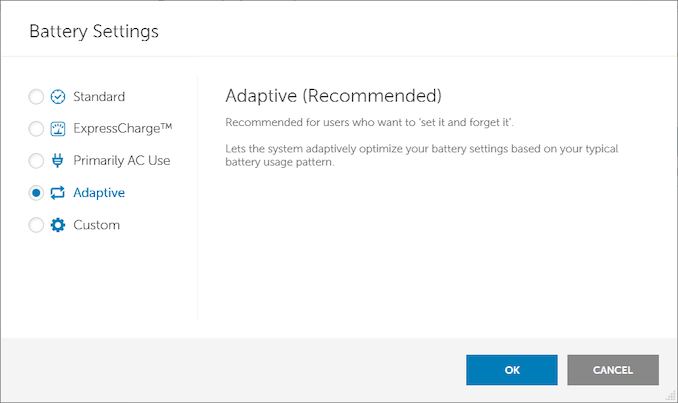








224 Comments
View All Comments
eek2121 - Thursday, July 16, 2020 - link
None of those? Intel has solid mobile offerings. Extremely competitive in performance and power consumption. Try reading the article instead of shilling the comments section.aebiv - Thursday, July 16, 2020 - link
You've been asleep for awhile eh?Walkeer - Thursday, July 16, 2020 - link
are you a bot or st.? Did you noticed the ryzen 4000 mobile CPU from AMD, which destorys any and all intel mobile chips in terms like performance, core count and power consumption? in this test, its repsesented by acer swift 3, which just completely annihilated the xps 13 in multi thread and GPU testsSharma_Ji - Thursday, July 16, 2020 - link
True that, after looking at those performance charts, buying an intel based machine would be plain stupid.invinciblegod - Thursday, July 16, 2020 - link
No it's not, mainly because very few companies actually has put Ryzen chips in their premium laptops/Ultrabooks. If you need a laptop right now and not next year, then these machines are fine. Also, any eGPU enthusiasts will have a more limited choice as future Ryzen machines will undoubtedly use thunderbolt only on few devices since it is not built in.invinciblegod - Thursday, July 16, 2020 - link
Competitive doesn't mean better, it means competitive. Like Qualcomm chips are competitive with Apple's offerings, not because it has equivalent performance, it just means that they are good enough that people using Android won't be compelled to go to iPhones because the chipset is just too far behind (like if Qualcomm was stuck on 3G for some reason or lacked wifi).Similarly, if you can do similar things with an Intel cpu compared to an AMD cpu, then they are "competitive" even if they are behind.
Operandi - Thursday, July 16, 2020 - link
Competitive means you are competing. When you are loosing in pretty much every meaningful metric you doing something else and its competing...PeterCollier - Thursday, July 16, 2020 - link
I didn't know that number of design wins was not a meaningful metric.Rookierookie - Friday, July 17, 2020 - link
I consider the mobile Ryzen 3000 series to be competitive, and those were losing in every meaningful metric to Intel chips.mrochester - Thursday, July 16, 2020 - link
Out of interest, where do you get 16:10 AMD Ryzen 4000 laptops from?